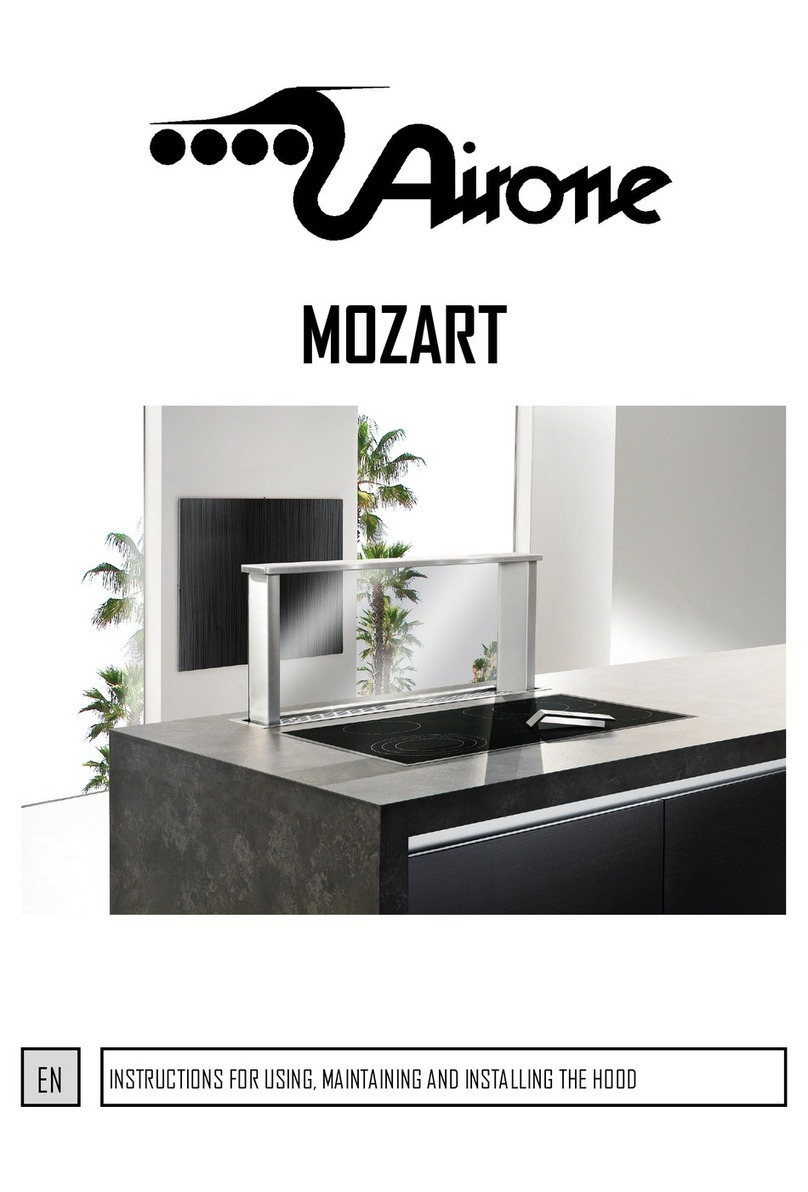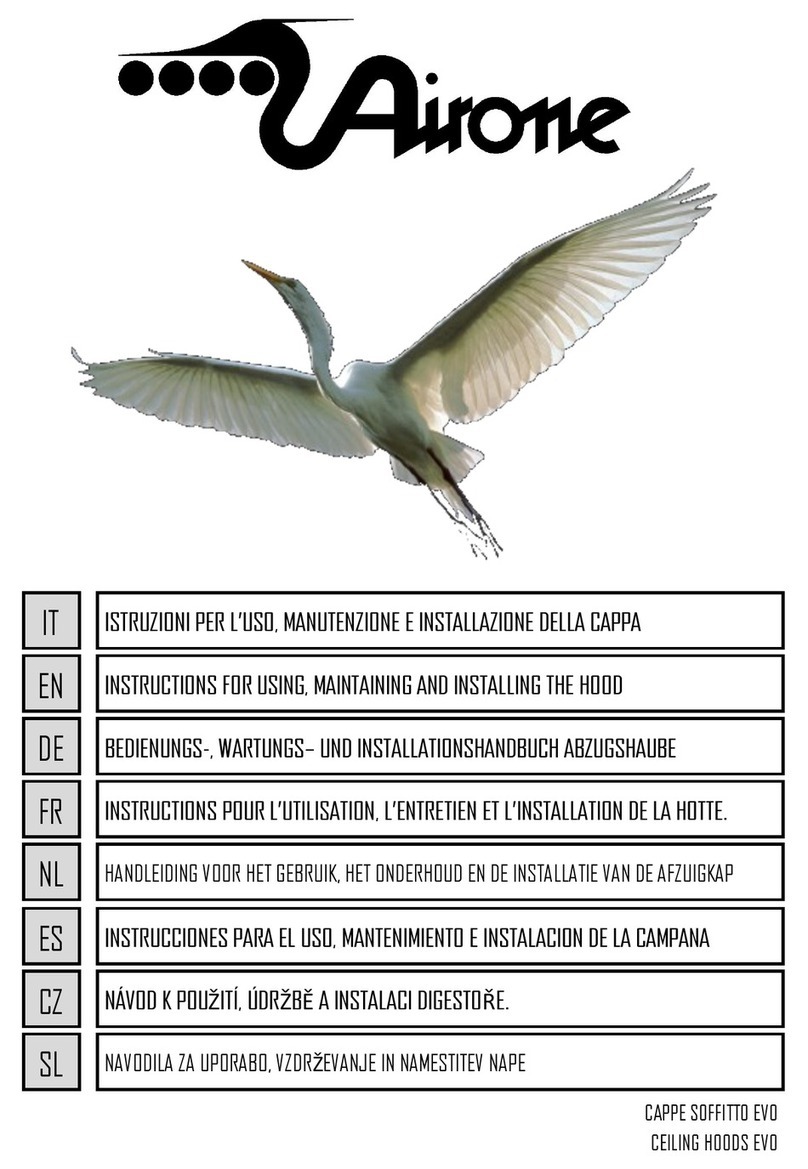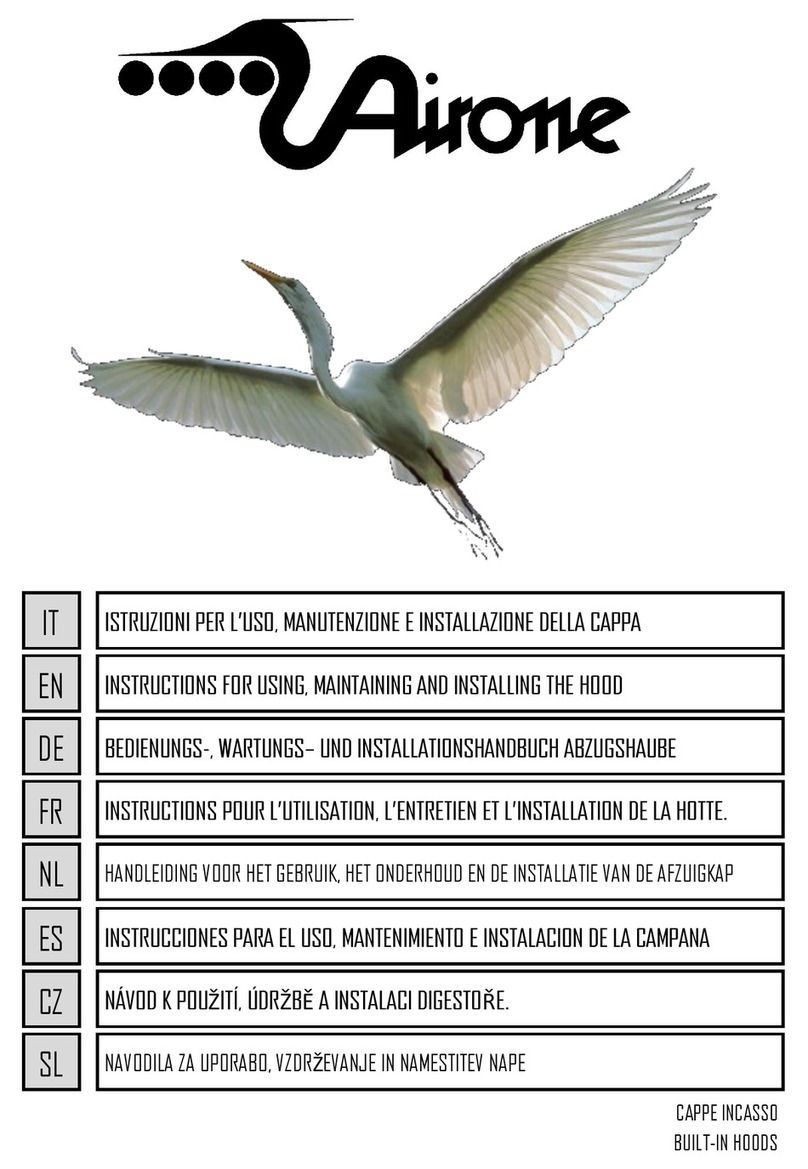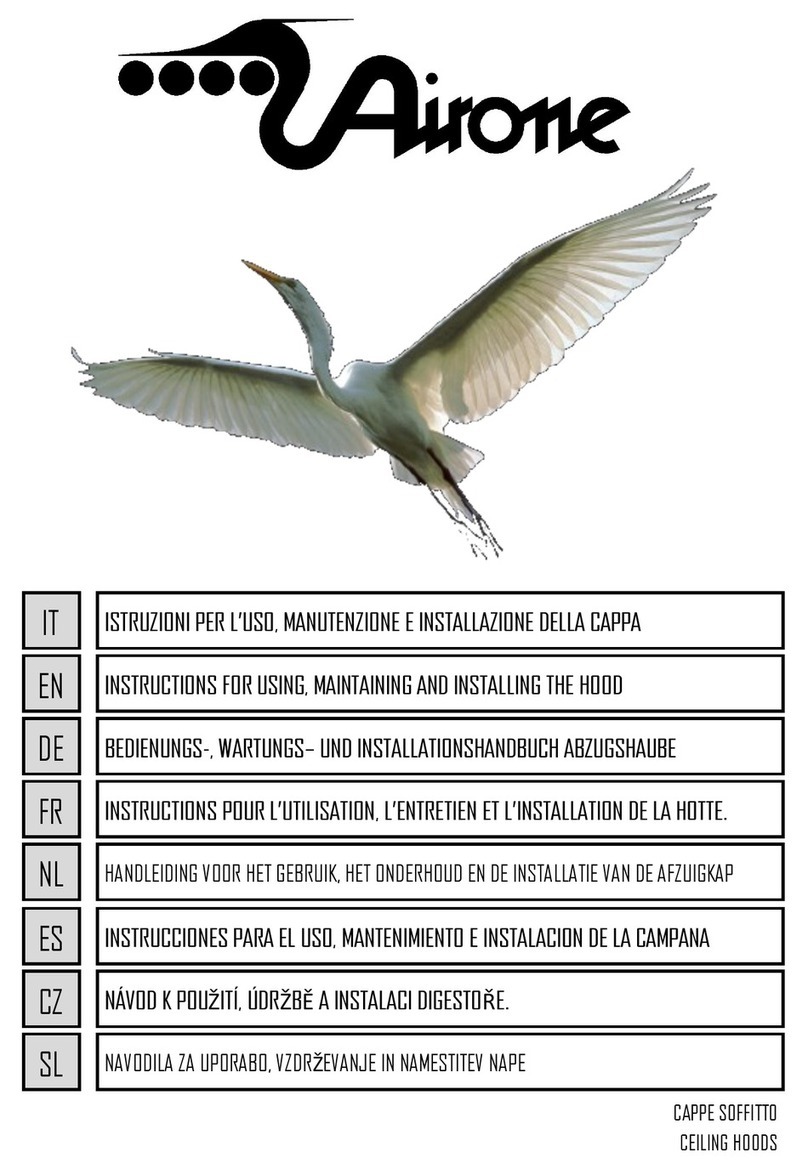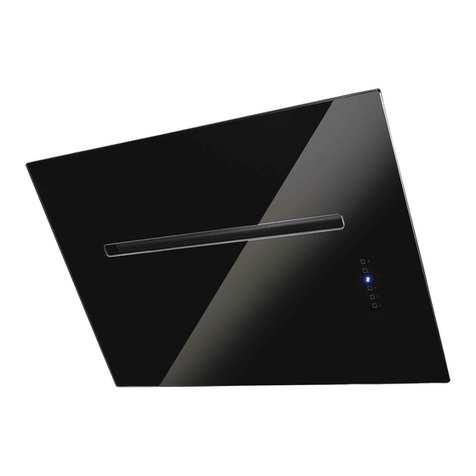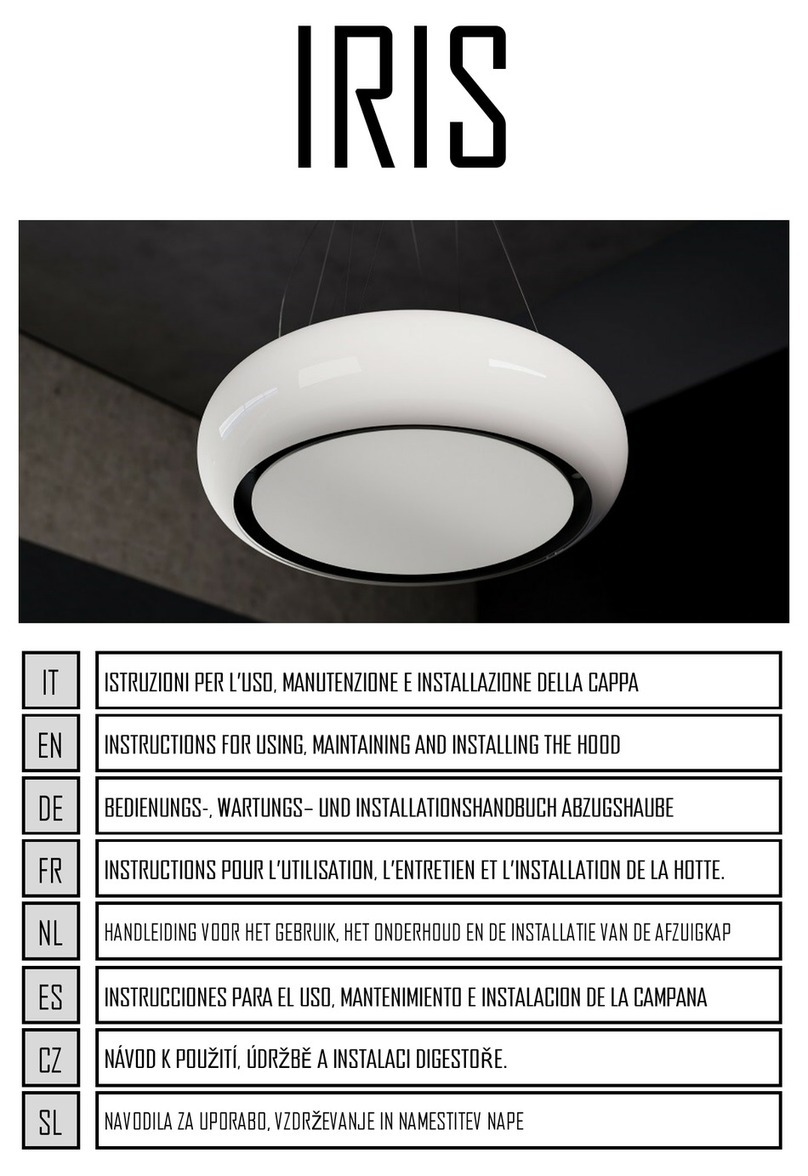
pursuant to art. 26 of the Italian Legislative Decree dated 14 March 2014, no. 49 “Implementation of directive 2012/19/EU on Waste
Electrical and Electronic Equipment (WEEE)” The crossed out wheeled bin symbol on the equipment or its packaging indicates that the product at the end of
its useful life must be collected separately from other waste. Therefore, any products that have reached the end of their useful life must be given to waste disposal
centres specializing in separate collection of waste electrical and electronic equipment.As an alternative to autonomous disposal, the device you want to dispose of can
be given back to the retailer at the time of purchasing new similar equipment. At electronic product retailers with a sales area of at least 400 m2, it is possible to
return, without any obligation to buy, electronic products to dispose of with dimensions below 25 cm free of charge.The separate collection for the deliver of the
equipment to recycling, to treatment and environmentally compatible disposal helps avoid possible negative effects on the environment and health and promotes the
reuse and/or recycling of materials that make up the equipment.
Ai sensi dell’art. 26 del Decreto Legislativo 14 marzo 2014, n. 49 "Attuazione della direttiva 2012/19/UE sui rifiuti di apparecchiature
elettriche ed elettroniche (RAEE)" Il simbolo del cassonetto barrato riportato sull’apparecchiatura o sulla sua confezione indica che il prodotto alla fine della
propria vita utile deve essere raccolto separatamente daglialtri rifiuti. L’utente dovrà, pertanto, conferire l’apparecchiatura giunta a fine vita agli idonei centri comunali
di raccolta differenziata dei rifiuti elettrotecnici ed elettronici. In alternativa alla gestione autonoma è possibile consegnare l’apparecchiatura che si desidera smaltire
al rivenditore, al momento dell’acquisto di una nuova apparecchiatura di tipo equivalente. Presso i rivenditori di prodotti elettronici con superficie di vendita di almeno
400 m2 è inoltre possibile consegnare gratuitamente, senza obbligo di acquisto, i prodotti elettronici da smaltire con dimensioni inferiori a 25 cm. L’adeguata raccolta
differenziata per l’avvio successivo dell’apparecchiatura dismessa al riciclaggio, al trattamento e allo smaltimento ambientalmente compatibile contribuisce ad evitare
possibili effetti negativi sull’ambiente e sulla salute e favorisce il reimpiego e/o riciclo dei materiali di cui è composta l’apparecchiatura.
Gemäß Art. 26 des italienischen Gesetzesvertretenden Dekrets vom 14. März 2014, Nr. 49 “Durchführung der Richtlinie 2012/19/EU über
Abfälle von Elektro-und Elektronikaltgeräten (WEEE)”Das Symbol der durchgestrichenen Mülltonne auf dem Gerät oder auf seiner Verpackung weist darauf
hin, dass dieses Produkt am Ende seiner Lebensdauer nicht mit dem normalen Hausmüll entsorgt werden darf. Aus diesem Grund muss der Benutzer das Gerät am Ende
seiner Lebensdauer zu geeigneten lokalen Sammelstellen für elektrotechnische und elektronische Abfälle bringen.Alternativ dazu kann das zu entsorgende Gerät beim
Kauf eines neuen, gleichwertigen Geräts an den Fachhändler übergeben werden. Elektronische Produkte mit Abmessungen unter 25 cm können außerdem zur Entsorgung
bei Fachhändlern elektronische Produkte mit einer Verkaufsfläche von mindestens 400 m2 abgegeben werden, ohne Verpflichtung zum Kauf eines neuen Produkts.Die
angemessene getrennte Müllsammlung zur Gewährleistung des anschließenden fachgerechten Recyclings und der umweltfreundlichen Entsorgung des Altgerätes trägt
dazu bei, dass etwaige negative Einflüsse auf Umwelt und Gesundheit vermieden und Materialien des Gerätes wieder verwertet und/oder recycelt werden können.
aux termes de l’art. 26 du Décret Législatif du 14 Mars 2014, n°49 « Application de la directive 2012/19/sur les déchets d’équipements
électriques et électroniques (DEEE)» Le symbole de la poubelle barrée reportée sur l’appareil ou sur son emballage indique que le produit doit être collecté
séparément des autres déchets à la fin de sa vie utile. L’utilisateur devra, par conséquent, donner l’appareil arrivé en fin de vie aux centres communaux de tri sélectif
des déchets électrotechniques et électroniques.En alternative à la gestion autonome, il est possible de donner l’appareil que l’on souhaite éliminer au revendeur, lors de
l’achat d’un nouvel appareil de type équivalent. Il est en outre possible de remettre gratuitement, sans obligation d’achat, les produits électroniques à éliminer ayant
des dimensions inférieures à 25 cm, auprès de revendeurs de produits électroniques ayant une surface de vente d’au moins 400 m2.Le tri sélectif adapté pour l’envoi
successif de l’appareil qui n’est plus utilisé au recyclage, au traitement et à l’élimination, compatible avec l’environnement contribue à éviter des effets négatifs
EN
IT
DE
FR
de acuerdo con el art. 26 del Dectero Legislativo n. 49, del 14 de marzo del 2014, “Actuación de la directiva 2012/19/acerca de los desechos de
equipos eléctricos y electrónicos (RAEE)”.El símbolo del contenedor barrado que aparece en el equipo o en la confección, señala que el producto, al concluir la vida útil,
debe ser eliminado por separado del resto de los desechos. Por lo tanto, cuando la vida útil del equipo concluye, el usuario deberá entregar este último a los centros especializa-
dos en recogida diferenciada de los desechos electrotécnicos yelectrónicos del propio del ayuntamiento.Como alternativaa la gestión autónoma es posibleentregarel equipo se
quiere eliminar al distribuidor donde se va a comprarun equipo equivalente nuevo. En las tiendas dedistribución de productos electrónicos con una superficie de venta de por lo
menos 400 m2 es además posibleentregarde forma gratis, sinla obligación de comprar, los productos electrónicos que se quieren eliminar con dimensiones inferiores a los
25 cm.La recogida diferenciada adecuada para el envío sucesivo del equipo hacia el reciclaje, eltratamiento y la eliminación compatible con el ambiente, contribuye a evitar
posibles efectos negativos enel medio ambiente yen la salud, y favorece la reutilización y/o reciclaje de los materiales que componenel equipo.
ES
krachtens art. 26 van het Italiaans wetsbesluit nr. 49 van 14 maart 2014 “Uitvoering van de richtlijn 2012/19/ inzake afval van elektrische en
elektronische apparatuur” Het symbool van de doorkruiste vuilnisbak weergegeven op de apparatuur of op de verpakking geeftaan dat hetproduct op het einde van zijn
levensduur gescheiden van het ander afval afgedankt moet worden. De gebruiker moet daarom de apparatuur op het einde van de levensduur ervan toevertrouwen aan geschikte
gemeentelijke centra voor de gescheiden verzameling van elektrotechnischenelektronisch afvalmateriaal.Als alternatief ophet autonoom beheer kan deapparatuur die men wilt
afdanken overhandigd worden aan de verkoper bij aankoop van een nieuwe gelijkaardige apparatuur. De verkopers van elektronische producten met een verkoopruimte van
minstens 400 m2 kunnenbovendien gratis en zonderkoopplichtinstaan voor de verwerking van elektronische producten metafmetingen kleinerdan 25 cm.De gepaste gescheiden
verzameling met het oog op de daaropvolgende recyclage van de apparatuur, de verwerking en de milieuvriendelijke recyclage, dragenertoe bij dat de mogelijke negatieve impact
op hetmilieu en de gezondheid voorkomen worden, en bevorderen het hergebruik en/ofde recyclage van de materialen waaruit de apparatuur samengesteld is.
NL
Podle čl. 26 legislativního nařízení dne 14. března 2014, n. 49 "Provádění směrnice 2012/19 / EU o odpadech z elektrických a elektro-
nických zařízení (OEEZ)" zamřížovaným bin symbolem na zařízení nebo jeho obalu znamená, že výrobek na konci své životnosti je nutno sbírat odděleněod
ostatního odpadu daglialtri , Uživatel proto musí přijmout výše uvedené zařízení k životu do příslušných komunálních sběrných středisek elektrotechnického a elektro-
nického odpadu. Jako alternativu k soběmůžete dodat zařízení, které chcete zlikvidovat prodejci, při koupi nového ekvivalentního zařízení. U prodejce elektronických
výrobkůs prodejní plochou nejméně400 m2 lze také dodat zdarma, bez nákup nezbytný, elektronické výrobky musí být likvidovány společněs rozměry menší než25
cm. Vhodné oddělený sběr pro následné předání má být odebráno pověření produktu k recyklaci, zpracování a ekologicky šetrné nakládání pomáhá zabránit negativ-
nímu dopadu na životní prostředí a zdraví a podporuje opětovné využití a / nebo recyklaci materiálůtvořících zařízení.
CZ
SL V skladu s členom. 26 zakonske uredbe 14. marca 2014, št. 49 "Izvajanje Direktive 2012/19 / EU o odpadni električni in elektronski
opremi (OEEO)," The zastarala bin simbola na opremi ali embalaže pomeni, da mora biti izdelek na koncu svoje življenjske dobe ločeno zbirati daglialtri odpadkov .
Uporabnik mora zato sprejeti zgornji opreme do življenja v ustrezne centre zbiranja komunalnih odpadkov za elektrotehniko in elektronskih odpadkov. Kot alternativo
sebi si lahko prinesejo opremo, ki jo želite odstraniti iz drobno, pri nakupu novega enakovredno napravo. Na drobno elektronskih izdelkov s prodajno površino najmanj
400 m2 lahko tudi dostavi brezplačno, brez nakupa, ki je potreben, da se elektronske izdelke je treba odstraniti z dimenzijami manj kot 25 cm. Ustrezno ločeno zbiranje
za nadaljnje posredovanju razgraditi proizvoda recikliranje, obdelavo in okoljsko sprejemljivo odstranjevanje preprečuje negativen vpliv na okolje in na zdravje in
spodbuja ponovno uporabo in / ali recikliranje materialov, ki tvorijo opremo.


